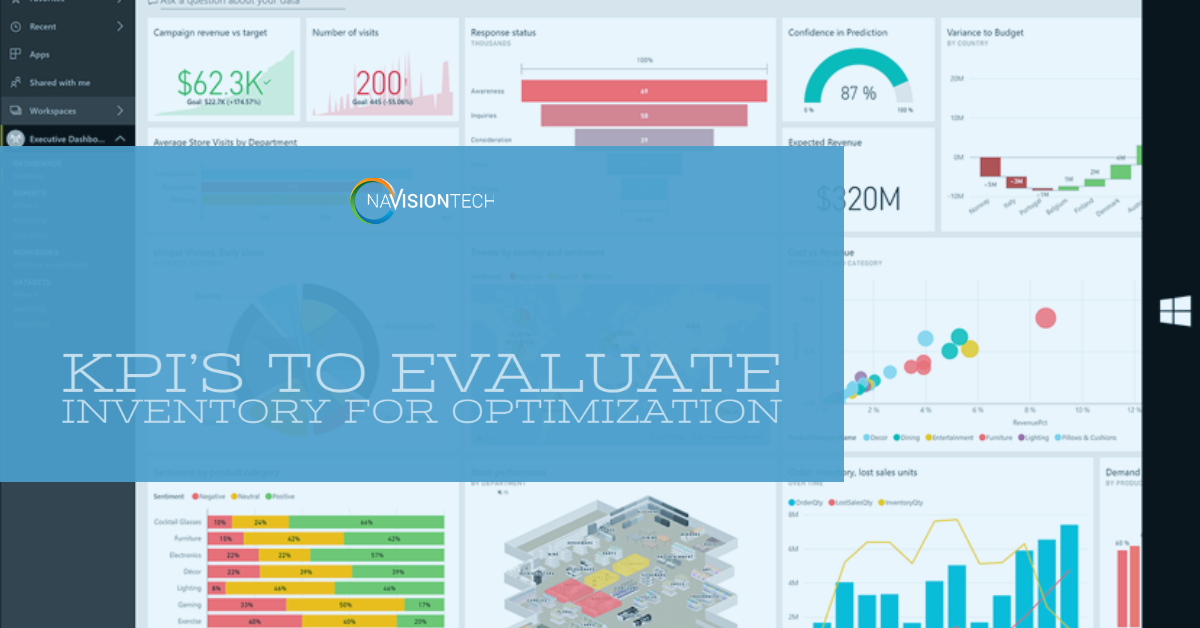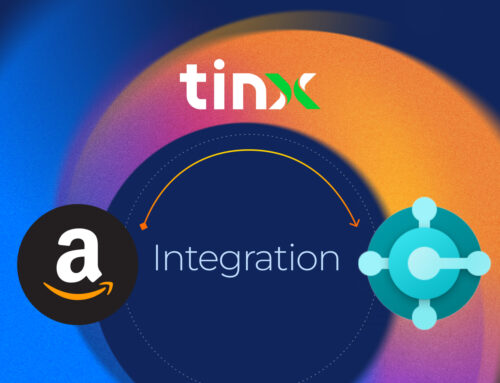What are the most used, and best, KPIs from BI to Evaluate Inventory for Optimization?
If you sell products as your primary engine of business growth, then clearly your goal is to carry the products and quantities that you really need, and not a unit more. The assumption here is that you have already factored in your replenishment lead times and supplier purchase level requirements and that you have a solid grasp of customer demand cycles. Now, here below, in random order, are five (5) of the most used, and best, KPI gauges that you can set up and monitor from your daily BI dashboard. These calculations present the actual performance of every product that you stock, and when used together, they will deliver a real ABC ranking that truly puts you in charge of your most important inventory asset.
Item Consumption Ratio
Provides management with an initial indication of an item’s importance to overall sales revenue. It acknowledges an item’s Consumption, and not its Profitability, as some items can and will be used as “loss-leaders” to generate collateral profitable sales. Note: This ratio is traditionally the
sole comparative factor used in determining A B C valuation in most common ERP inventory systems. Its major weakness, when used alone, is that it cannot measure item popularity. For that we must rely on supplemental help from both Item
Turnover Rate and
In-Transaction Frequency.
Item Consumption Ratio is a Percentage calculated as follows:
Annualized Item Cost of Goods Sold ($)/ Annualized Total Cost of Goods Sold ($) = %; 0 ≤ % ≤ 100
Item Turnover Rate
Provides management with an indication of an item’s average investment “flip-rate” (or) time-value investment profitability. It does indeed aid in determining general Item popularity; and it is also critical in demand vs. supply cycle forecasting of products with high Margin Contribution Ratios. Overall, this rate is of supplemental importance to Financial Budget Management in their comparative ROI analyses of broad product Categories, Departments, and Groups.
Item Turnover Rate is a Number calculated as follows:
Annualized Item Cost of Goods Sold ($)/ Item Average Daily Investment Value (aka Average Ending Daily Inventory) ($) = n; 0 ≤ n ≤ ∞
Margin Contribution Ratio
Provides management a “real” indicator of an item’s significance to, (or) contribution % of, the organization’s total gross profit margin. By broadly employing this single factor, an organization can extrapolate its “most profitable” Item, Category, Style, Department, Store, Dimensional Profit Center, and etc. Note:
Do not confuse this with a similar sounding cost accounting term – Contribution-Margin – which is used in classic “break-even” analysis.
Margin Contribution Ratio is a Percentage calculated as follows:
Annualized Item Profit Margin ($) / Annualized Total Profit Margin ($) = %; 0 ≤ % ≤ 100
In-Transaction Frequency Ratio
Provides management with a look at an item’s day-to-day popularity and reinforces the Item Consumption Ratio as a determinant of an item’s intrinsic value to the organization. Also, as this analysis requires a look into detailed transaction history, that history will also provide side benefits of revealing common tag-a-long or paired items to promote and exploit Cross-selling and Substitution opportunities.
In-Transaction Frequency Ratio is a Percentage calculated as follows:
Annualized Item In-Transaction Count (QTY)/ Annualized Total Transaction Count (QTY) = %; 0 ≤ % ≤ 100
Return on Investment Ratio
Provides management with a historical “comparative investment” rate of return % as it is used in all financial circles; and in that realm, where it truly shines as “the number”, it is usually presented as a % for a department, division, store, or the entire enterprise to lure investment funding. For credence as a % for individual items, it really requires analytical assistance from Item Turnover Rate and especially Margin Contribution Ratio.
Return on Investment Ratio is a Percentage calculated as follows:
Annualized Item Total Profit Margin ($) / Item Average Daily Investment Value (aka Average Ending Daily Inventory) ($) = %; 0 ≤ % ≤ ∞
Try Navisiontech Support today! We offer 2 FREE hours of support for nearly ALL versions of Dynamics NAV, from version 3 to Business Central. Our support team is US based and will provide support not only for your ERP system, but also for SQL Server, EDI, supply chain management tools, and even code-level support.






[…] post KPI’s to Evaluate Inventory for Optimization appeared first on Navisiontech, […]